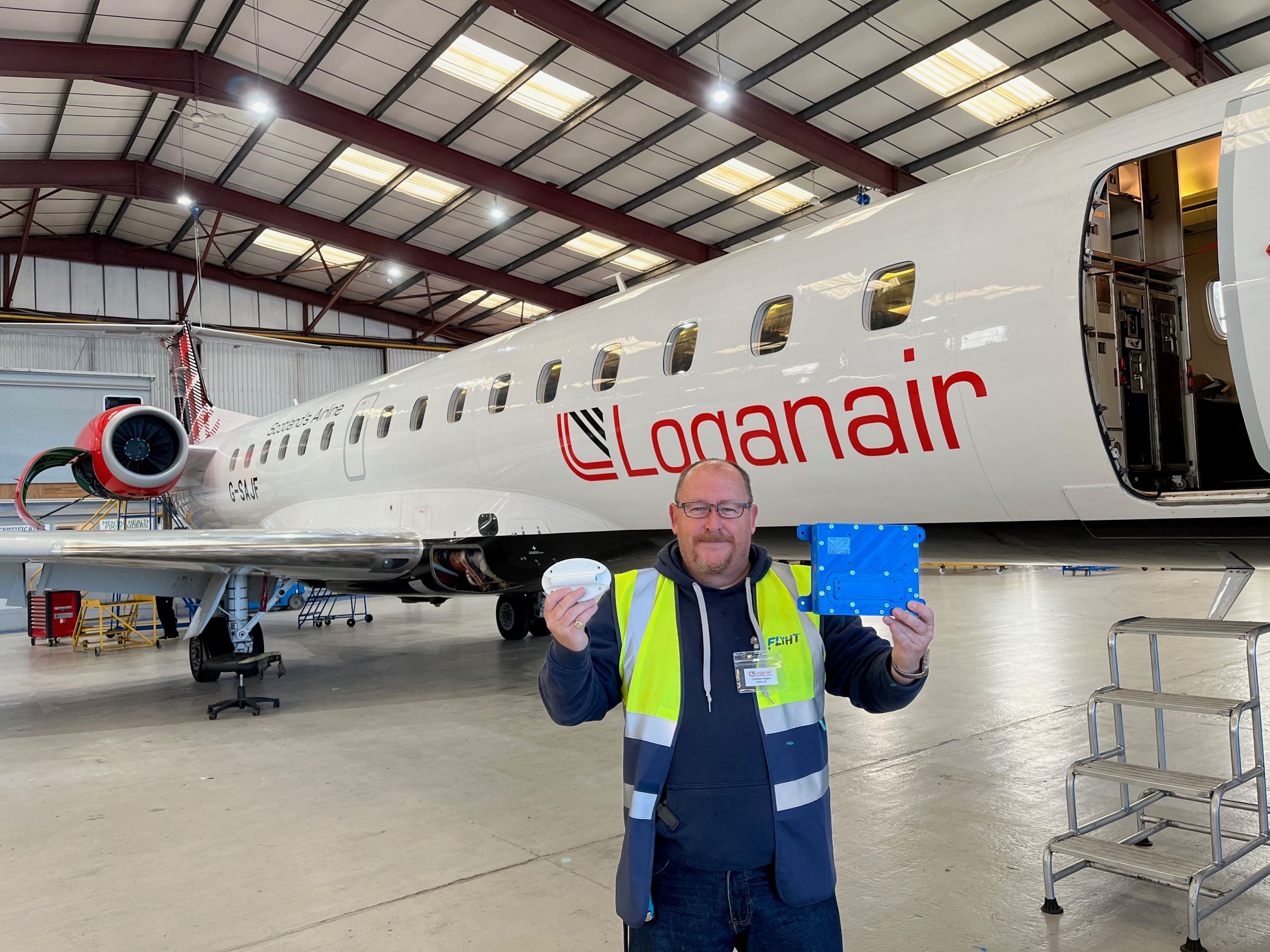New partnership aims to improve aviation forecasts
Author: Press Office
12:00 (UTC+1) on Wed 30 Aug 2023
Met Office collaboration with FLYHT Aerospace and Loganair to help improve forecasts of high impact weather.
A partnership between the Met Office, FLYHT Aerospace Solutions Ltd. (TSX-V: FLY) (OTCQX: FLYLF) and Loganair, aims to improve the accuracy of weather forecasts and the prediction of localised severe weather in the UK, with expected benefits for the aviation industry such as more efficient route planning and supporting aims to reduce CO2 emissions.
The partnership provides the Met Office with FLYHT-WVSS-II atmospheric water vapour sensors to be installed on Loganair Embraer 145 aircraft flying across the UK. The sensors will continuously monitor environmental conditions around the aircraft during flight.
The Met Office is particularly interested in data collected during the ascent and descent phases of flight as this will provide a view of humidity, temperature, and wind measurements throughout the atmosphere. The use of this increase in observational data, is only possible because of the new Met Office supercomputer, which is coming online early in 2024. It will ultimately improve the forecasting of local scale weather. The relative humidity sensors will be fully integrated with FLYHT’s Certus SatCom and AFIRS Edge multi-channel WQAR for real-time data transmission of aircraft-based observations.

Murray Skelton, FLYHT’s VP Business Development and Weather.
These readings will help to better predict extreme weather such as the Cumbrian storms of 2015, as well as improve local forecasting of conditions such as thunderstorms, fog, and showers. Adverse weather presents one of the biggest risks and safety factors for aircraft operations and can impact flights as well as ground-crew operations and maintenance tasks, further affecting scheduling and planning issues and adding to flight safety risks. Across Europe, weather is one of the largest contributing factors to aviation delays. It exacerbates the volatility of an already disrupted network at capacity. Better weather observations will greatly improve weather-based flight planning and real-time updates, thereby enabling more efficient avoidance of severe weather and turbulence. This initiative will also help airlines understand the formation of contrails, and potentially enable a reduction in contrail formation, which has been identified as a sustainability goal within the airline industry.
Met Office Associate Director of Technical Services, Bruce Truscott, said: "I am delighted to be working with FLYHT and Loganair to further improve our ability to observe and forecast the weather. Humidity measurements from aircraft will provide a much-valued addition to our observations capability, helping us to better define the 3-dimensional structure of the atmosphere which in turn is expected to support improvements in forecast accuracy."
Jonathan Hinkles, CEO at Loganair, said: “We are very pleased to be working with the Met Office and FLYHT on this ground breaking project. The data collected from these systems will improve weather forecasting accuracy across the UK which will in particular benefit air travellers. It will also provide ground breaking and unique insights into aviation induced contrail formation which will be critical in enabling us to take effective steps to mitigate the non CO2 effects of aviation and reduce the overall climate impact of air travel.”
“It's a privilege to support two forward thinking organizations like the Met Office and Loganair to help address our shared interest in weather and the environment,” said Kent Jacobs, President & Interim CEO at FLYHT. “FLYHT is pleased to be incorporating relative humidity data from our FLYHT-WVSS-II sensors into our aircraft-based observations knowing this will have a significant, positive effect on weather modelling.”
Murray Skelton, FLYHT’s VP Business Development and Weather, added, “Having these two leaders as partners validates our weather technology and our growing suite of actionable intelligence solutions. We look forward to installing our FLYHT-WVSS-ll hardware on Loganair’s aircraft over the coming months and to providing end-to-end program project maintenance and support for this innovative program.”
The Met Office contract is valued at approximately £7 million, for services that could extend to 2037. Installations on Loganair’s fleet of Embraer aircraft are expected to commence during the first half of 2024.





